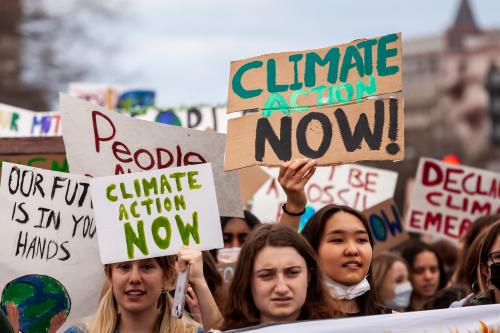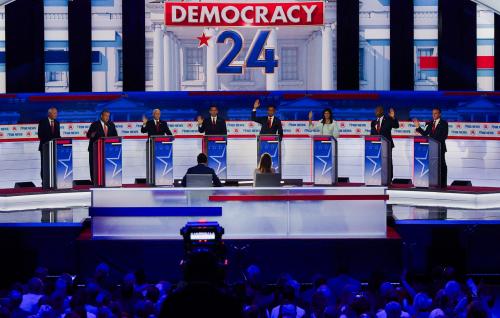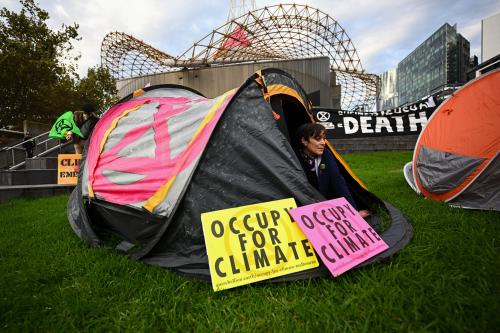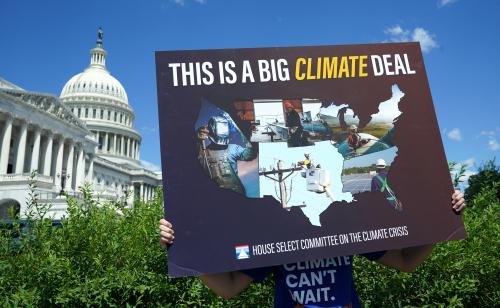As the 118th Congress is sworn in today, one of the many big issues before them will be climate change. The first two years of the Biden Administration ushered in historic national climate action in America, including the largest investment ever to encourage a clean energy transition with billions of dollars being spent to support clean energy, climate resilience, and equity-centered environmental investments. All of this was accomplished with a Democratic majority in the Congress. So what happens now that the Republicans control the House? My research suggests clear areas of disagreement but also opportunities for collaboration.
Since 2010, I have been studying the top political elites’ positions on the most prominent climate policy options in the US through my Climate Constituencies Project. In spring 2022, I conducted a new wave of data collection to understand how perspectives on climate policy options changed after the 2020 election. In total, 70 policy actors were surveyed and 68 participated in interviews—including politicians, federal agency offices, business leaders and associations, environmental groups, prominent scientists, and other political organizations. Participants in the study represent the full range of actors that work to influence climate policy at the federal level (including the offices of 8 Republicans and 5 Democrats in the Congress).
Here, I present findings from the 2022 research plotting responses to questions regarding support for climate-related debates, proposals, and decisions in the United States. Respondents were asked to indicate their organization and/or office’s level of support from Strongly Disagree (1) to Strongly Agree (5) to each item. In this figure, responses to these questions are plotted by policy actor (the black diamonds represent the overall mean for each response).[1] Policy mechanisms circled in red are those where there is greatest disagreement; mechanisms circled in green show potential opportunities for bipartisan collaboration.

When we map political elites’ perspectives regarding a transition away from fossil fuels by the various policy actor types, the full spectrum of disagreement around this topic reveals itself (this statement is circled in red). Not only do the Republicans in the Congress (the red dots) oppose a transition away from fossil fuels, Democrats in the Congress and the Biden Administration (the blue dots) are on the opposite end of the distribution. In fact, the responses to “US energy policy should replace fossil fuels with clean energy” had the largest standard deviation of all of the policy questions.
This difference in perspective was corroborated during my interviews. While Democrats and members of the Biden Administration discussed how best to transition the US away from fossil fuels towards more renewable energy sources, Republicans focused much of our conversation on their perspective that expanding American natural gas extraction and exporting it abroad is the best way to address climate change globally. Perhaps this staff member for the Republicans on one of the House committees directly working on the issue best summarizes this perspective: “The single biggest thing that we can do in the near-term from a climate standpoint is to replace our cleaner, natural gas…and supplant much dirtier Russian natural gas” (interview with author, 3/18/2022).
Now that the Republicans have taken the majority in the House of Representatives, we should expect the new leadership to focus their climate efforts unambiguously on fossil fuel expansion to support increased natural gas extraction in the US.
However, while there is clear disagreement regarding a transition away from fossil fuels, data from the 2022 survey also identify opportunities for collaboration (the statements circled in green).[2] In particular, two of the statements yielded responses where Republicans and Democrats were much closer together in their perspectives. Policy actors on average supported federal funding to study “technological responses to climate change.” In addition, nearly all actors supported the idea that “the US should provide subsidies for nuclear power as a form of greenhouse gas emissions reductions.” Policy actors were also in relative agreement about a cap-and-trade policy. In this case, however, nearly all the policy actors opposed establishing a federal market for emissions trading.
There’s no question that the policy instruments with the highest level of agreement are less risky, as well as less likely to motivate the “rapid transformation of societies” that the 2022 UN Emissions Gap Report says is necessary “to avoid climate disaster.” Nevertheless, any additional opportunities for collaboration (and perhaps even bipartisanship) on climate in the new Congress will help maintain the momentum started in 117th Congress and keep the US on a much stronger path moving forward.
[1] Since the sample had only 2 scientists, they were dropped from the figures.
[2] As measured by the smallest standard deviations.
-
Acknowledgements and disclosures
The research presented here was funded, in part, by a grant from the William and Flora Hewlett Foundation.







Commentary
What to expect on climate change from the New Congress
January 3, 2023